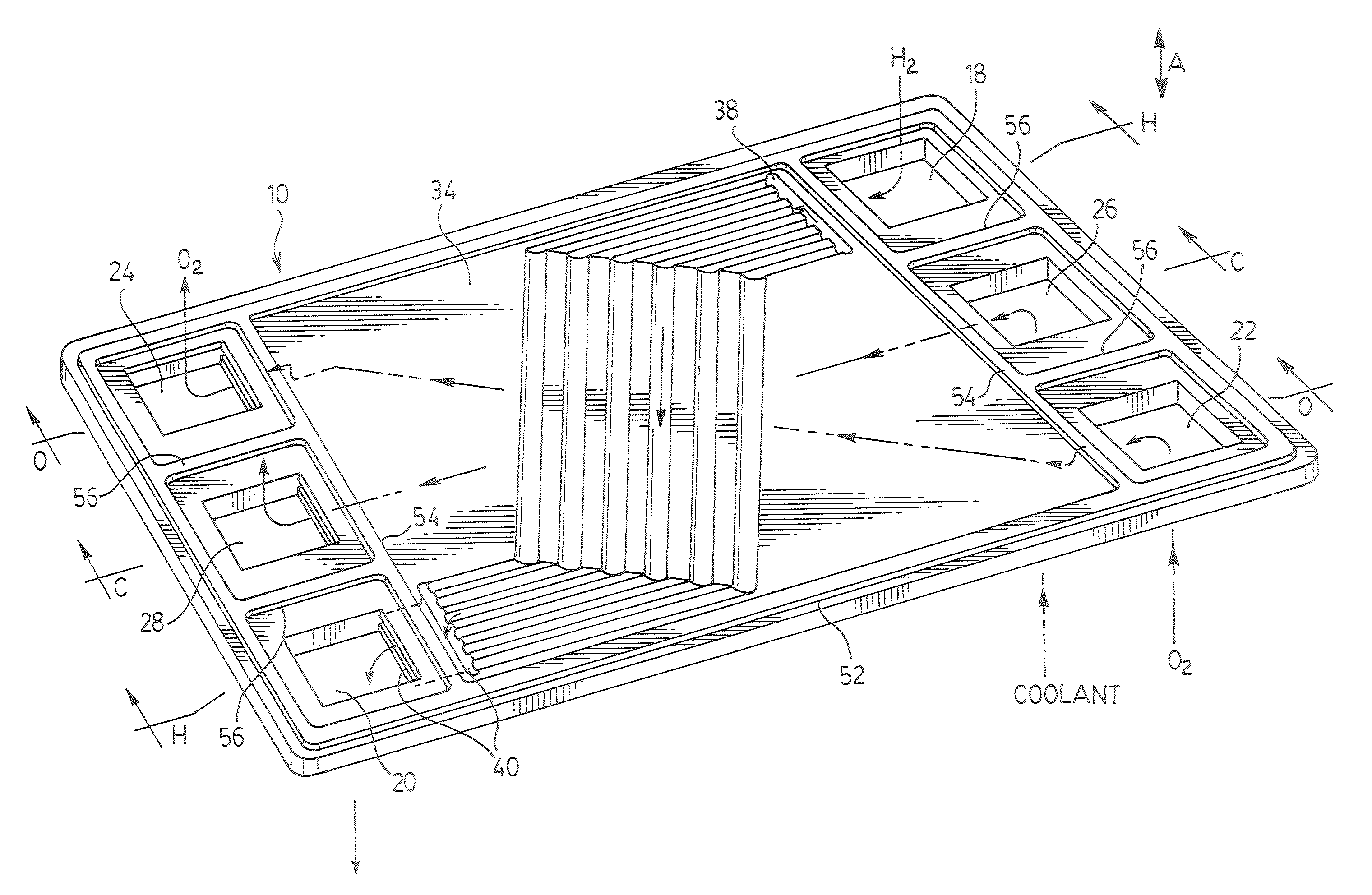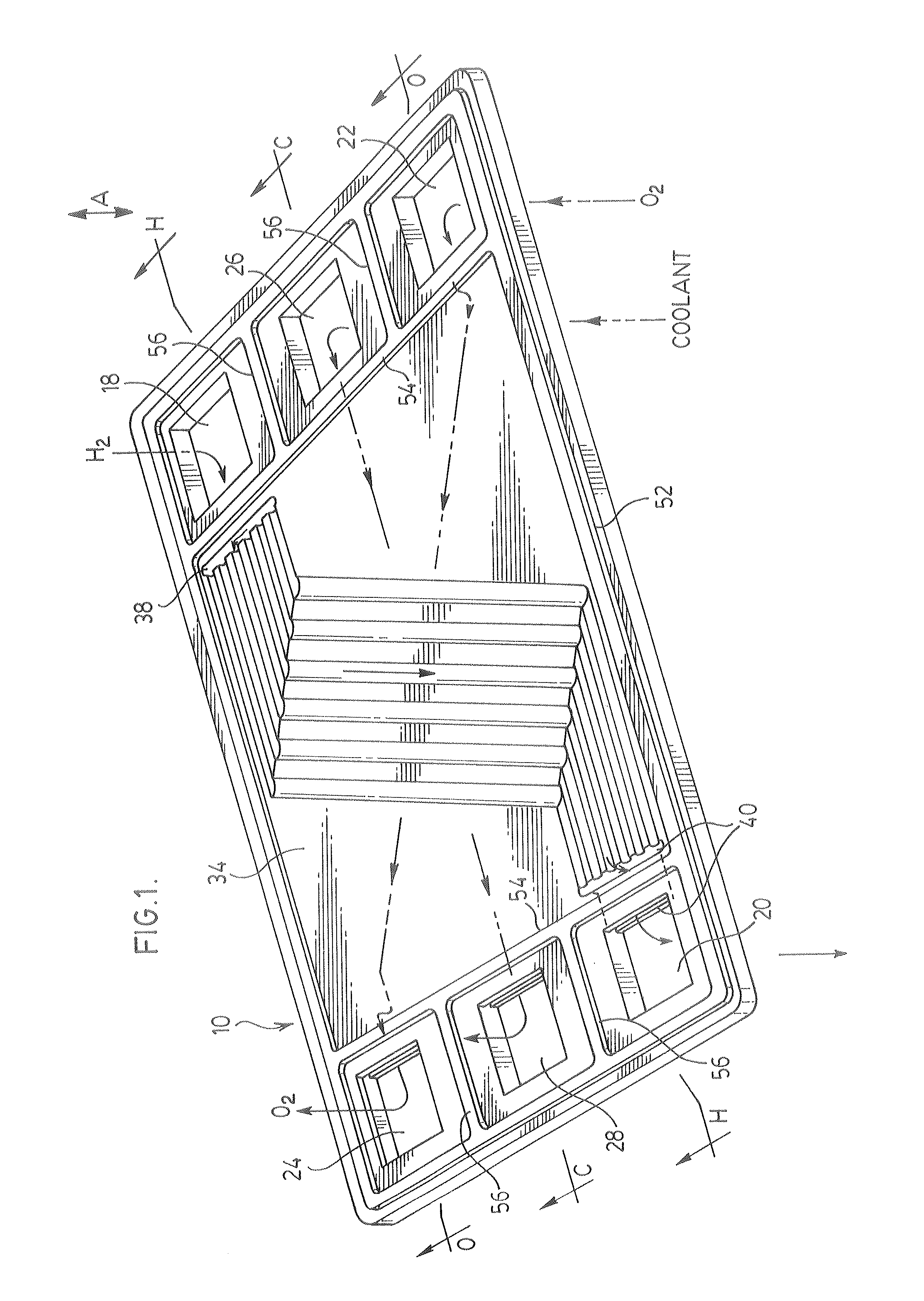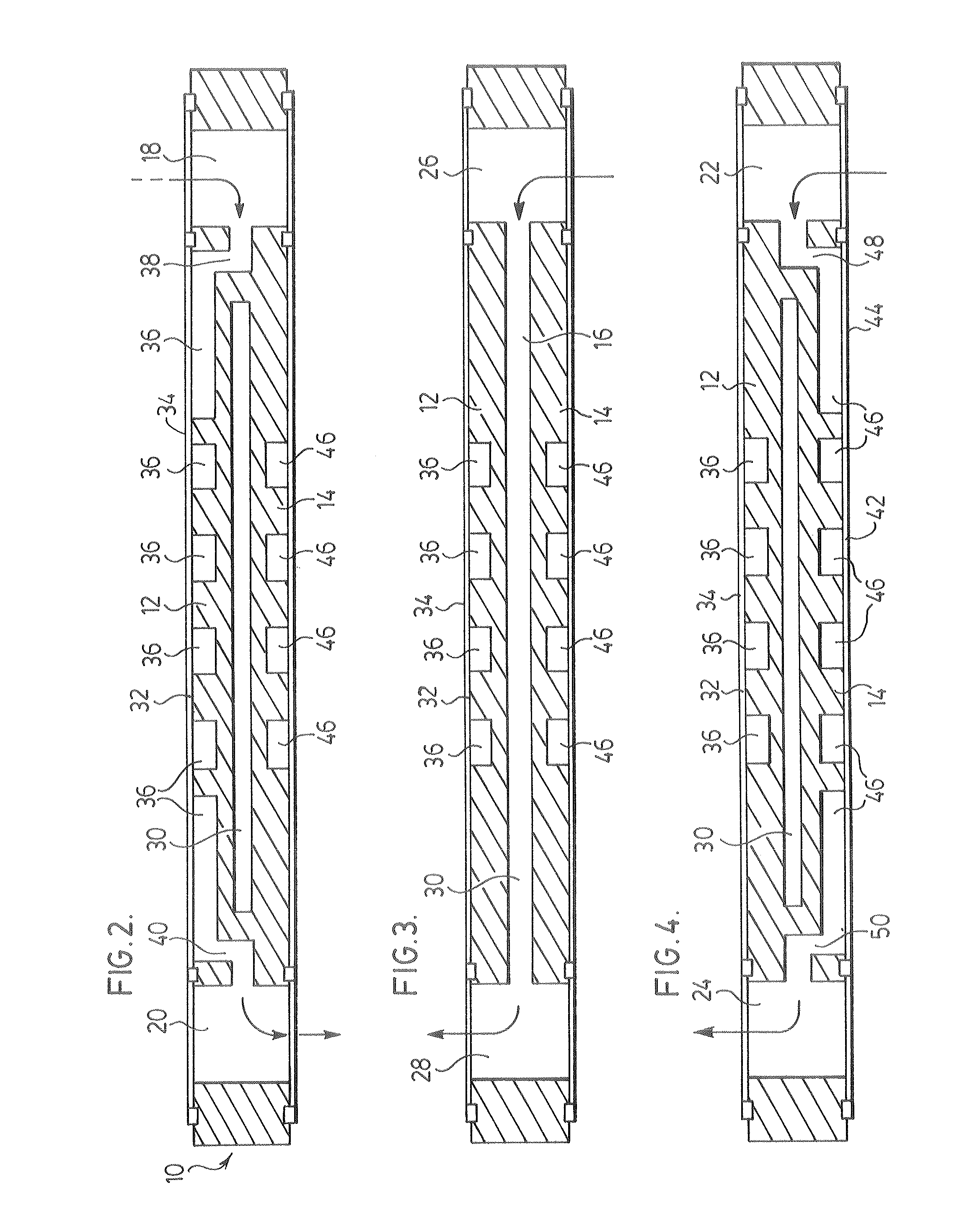Fuel cell assemblies with integrated reactant-conditioning heat exchangers
a technology of reactant conditioning and heat exchangers, which is applied in the direction of fuel cells, cell components, fuel cell grouping, etc., can solve the problems of reducing the efficiency reducing the complication and cost of fuel cell systems, and using separate heat exchangers
- Summary
- Abstract
- Description
- Claims
- Application Information
AI Technical Summary
Problems solved by technology
Method used
Image
Examples
first embodiment
[0043]the invention is further described below with reference to FIGS. 5 to 11. The fuel cell assembly according to the first preferred embodiment of the invention includes a plurality of stacks made up of plates 10. For the purpose of simplification, FIGS. 6 to 11 omit all details of plates 10 with the exception of the inlet and outlet openings 18, 20, 22, 24, 26 and 28 and the corresponding manifolds.
[0044]As shown in FIG. 7, the fuel cell assembly includes a fuel cell stack 62 comprised a first plurality of plates 10. The identities of the inlet and outlet openings of the plates 10 in the fuel cell stack are as described above with reference to FIGS. 1 to 5. For the purpose of distinguishing the plates 10 of fuel cell stack 62 from other plates of the fuel cell assembly, they are referred to in the following description, and in FIGS. 6 to 11, by reference 10a and their openings are referred to as 18a, 20a, 22a, 24a, 26a and 28a.
[0045]The plates 10a of fuel cell stack 62 are stac...
second embodiment
[0084]FIGS. 14 to 16 illustrate in more detail the flow paths followed by the anode gas, cathode gas and the coolant as they flow through the fuel cell assembly according to the invention illustrated in FIG. 13.
[0085]It will be appreciated that the provision of multiple coolant loops and the recirculation of the anode and cathode gases in the second embodiment of the invention are two separate functions which are not necessarily embodied in a single fuel cell assembly. In a first variant of the second embodiment, illustrated in FIG. 17, multiple coolant loops are provided as in FIG. 13, but the anode and cathode gases flow through the entire fuel cell assembly from one end to the other as in the first embodiment of the invention described above.
[0086]FIG. 17 illustrates a fuel cell assembly comprising a fuel cell stack 140, a first heat exchanger 104 and a second heat exchanger 84, all of which have already been described above in detail. It will be seen from FIG. 17 that the anode ...
PUM
| Property | Measurement | Unit |
|---|---|---|
| electrical energy | aaaaa | aaaaa |
| heat | aaaaa | aaaaa |
| operating temperature | aaaaa | aaaaa |
Abstract
Description
Claims
Application Information
 Login to View More
Login to View More - R&D
- Intellectual Property
- Life Sciences
- Materials
- Tech Scout
- Unparalleled Data Quality
- Higher Quality Content
- 60% Fewer Hallucinations
Browse by: Latest US Patents, China's latest patents, Technical Efficacy Thesaurus, Application Domain, Technology Topic, Popular Technical Reports.
© 2025 PatSnap. All rights reserved.Legal|Privacy policy|Modern Slavery Act Transparency Statement|Sitemap|About US| Contact US: help@patsnap.com



